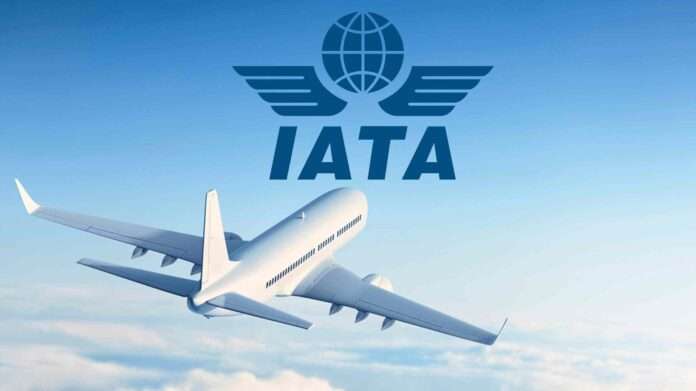“The last three years have been extremely challenging for the airline industry. Asian airlines, in particular, were hit hard, accounting for about a third of the industry’s losses between 2020 and this year. With the region finally emerging from COVID-19, governments have a key role to play in accelerating the recovery, and supporting the industry’s sustainable growth.”
— Conrad Clifford, IATA’s Senior Vice President and Deputy Director General
The International Air Transport Association (IATA) urged the Asia-Pacific region to prepare for the anticipated surge in traffic and provide policy support for the industry’s decarbonization efforts, as the region moves forward from COVID-19.
“The last three years have been extremely challenging for the airline industry. Asian airlines, in particular, were hit hard, accounting for about a third of the industry’s losses between 2020 and this year. With the region finally emerging from COVID-19, governments have a key role to play in accelerating the recovery, and supporting the industry’s sustainable growth,” said Conrad Clifford, IATA’s Senior Vice President and Deputy Director General.
Clifford was speaking at the Association of Asia Pacific Airlines’ (AAPA) Assembly of Presidents in Bangkok.
“Asia has been a laggard. The rest of the world started lifting restrictions and reopening borders last year. However, it was only around April this year that positive momentum was seen in Asia. That is why international passenger demand in September was only at 41.5% of 2019 levels, the lowest among regions,” said Clifford. North American carriers led the way at 89% of 2019 levels, while the other regions were in the 73%-83% range.
“Asia-Pacific governments can accelerate the recovery. There is no reason why we cannot travel as we did before the pandemic. The region also needs to prepare for the surge in traffic. The delays and congestion experienced in Europe and North America should be a stark reminder for airports and government agencies in Asia-Pacific. Now is the time to get the capacity in place, both in terms of infrastructure and the manpower,” said Clifford. IATA is also calling for more digitization of processes so as to be able to handle the increase in traffic.
Clifford also highlighted the need to address air traffic congestion on routes between Asia and Europe, which has been increasing due to airlines reinstating their networks, coupled with diversions to avoid the airspace over Afghanistan, Russia and Ukraine
Clifford recognized the region’s recovery will be held back as long as China remains closed to international travel. “We must learn to live, travel and work with COVID-19. We hope the Chinese government will have the confidence to re-open its borders soon and connect with the world,” he said.
In 2021, IATA’s members committed to achieve net zero CO2 emissions by 2050. Last month, governments meeting at the International Civil Aviation Organization (ICAO) Assembly adopted a Long Term Aspirational Goal (LTAG) to achieve net zero CO2 emissions by 2050.
“We are extremely encouraged by the LTAG agreement at the ICAO Assembly. With both governments and industry focused on the same goal, the significance of LTAG cannot be overstated. But to achieve net zero CO2 emission by 2050, government policy support in key areas of decarbonization is critical. One such area is incentivizing the production capacity of Sustainable Aviation Fuels (SAF),” said Clifford.
SAF is currently expected to account for 65% of carbon mitigation in 2050. It will be the largest contributor to the industry’s sustainability. Airlines bought every drop of SAF available in 2021 and have committed to over $17 billion of forward purchasing agreements.
“The problem is the limited supply and high costs. I urge Asia-Pacific governments to look at stimulating SAF production,” said Clifford. Government incentives for SAF could see 30 billion liters of production capacity globally by 2030. Japan and Singapore have demonstrated an exemplary approach to SAF, actively involving the industry in the consultation process, and in promoting domestic production of SAF.
Clifford also highlighted the need to address air traffic congestion on routes between Asia and Europe, which has been increasing due to airlines reinstating their networks, coupled with diversions to avoid the airspace over Afghanistan, Russia and Ukraine.
“Over the Bay of Bengal, air navigation service providers in India and Malaysia have been working towards trials to reduce separation standards safely between aircraft to increase the airspace capacity. This is positive. We need the neighboring states to cooperate with each other, work with airlines, to implement procedures that make full use of the capabilities of modern aircraft,” said Clifford.
*********************************************************************
Readers
These are extraordinary times. All of us have to rely on high-impact, trustworthy journalism. And this is especially true of the Indian Diaspora. Members of the Indian community overseas cannot be fed with inaccurate news.
Pravasi Samwad is a venture that has no shareholders. It is the result of an impassioned initiative of a handful of Indian journalists spread around the world. We have taken the small step forward with the pledge to provide news with accuracy, free from political and commercial influence. Our aim is to keep you, our readers, informed about developments at ‘home’ and across the world that affect you.
Please help us to keep our journalism independent and free.
In these difficult times, to run a news website requires finances. While every contribution, big or small, will makes a difference, we request our readers to put us in touch with advertisers worldwide. It will be a great help.
For more information: pravasisamwad00@gmail.com



